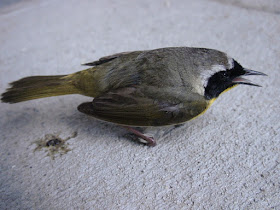A recently issued scientific paper indicates a great diversity of vascular flora occur in Brown County, Nebraska.
There are 726 plant species, subspecies and varieties known to occur,
according to research by Megan K. Killion and Steven J. Rothenberger,
associated with the University of Nebraska at Kearney. There are 105
plant families represented.
The diversity is due to the variety of native vegetation types occurring
in the 1,221 square miles of the county, from the Niobrara River valley
south to the Sand Hills. Specific types identified include sand hills
mixed grass prairie, gravelly mixed-grass
prairie, ponderosa pine forests/savannas, sand hills
borders/mixed-grass prairie, upland deciduous prairie and wetlands.
Another explanation for the floral diversity indicated by the authors,
is that "post-glacial forests in the valley serve as a transition zone
that supports species with both western and eastern affinities."
"Parts of the Niobrara valley represent a unique transition zone where
species with northern, southern eastern and western affinities meet,"
said Rothenberger. "There are plant species that are more representative
of the Black Hills or of montane forest environments
than the Great Plains."
The significance of the river valley and its flora "runs far beyond the
state's border," he noted in an article prepared for the National Park
Service. "Management of the scenic river valley is essential to its
biological integrity," he said
Some of the rare or unusual species within the Niobrara Valley include
paper birch, hybrid aspen (known as "ancestors of the Pleistocene Epoch"
of thousands of years ago), harebell, large-flowered tick-clover, wild
columbine, prairie alumroot and different
types of sedges.
"It is noteworthy that Megan completed this study as a part
of her senior undergraduate research project at UNK," Rothenberger said. "All of our
undergraduates are required to complete a research project under the
guidance of a mentor (a full-time faculty member of
the biology department).
She was originally from Brown County and was pleased to
discover some new county records that were added to the state's known
flora."
There were 14 "new county records" collected, according to the article.
The "blue scorpion grass" specimen was only the second for the state,
being previously known only from Cass County.
The list of species is based upon specimens collected at 21 sites
visited during the 2008 growing season, including Long Pine State Park,
the Niobrara Valley Preserve, privately owned pastures and hay meadows
and Keller State Park. Their work also involved
a review of pertinent publications or material in museum collections to
determine additional records.
A comparison was included which indicates the difference in the number of species known for four other Nebraska counties:
Banner - 435
Dixon - 439
Keith - 645
Seward - 613
The recently issued article was in the
Transactions of Nebraska Academy
of Sciences, 2011 edition. It includes a complete list of those plants
recorded thus far in the county. Voucher specimens are now in the
herbarium at UNK. Records from this effort have also been added to the
Flora of Nebraska (second edition, issued in 2011), by Robert Kaul, David Sutherland, and Steven Rolfsmeier.



























